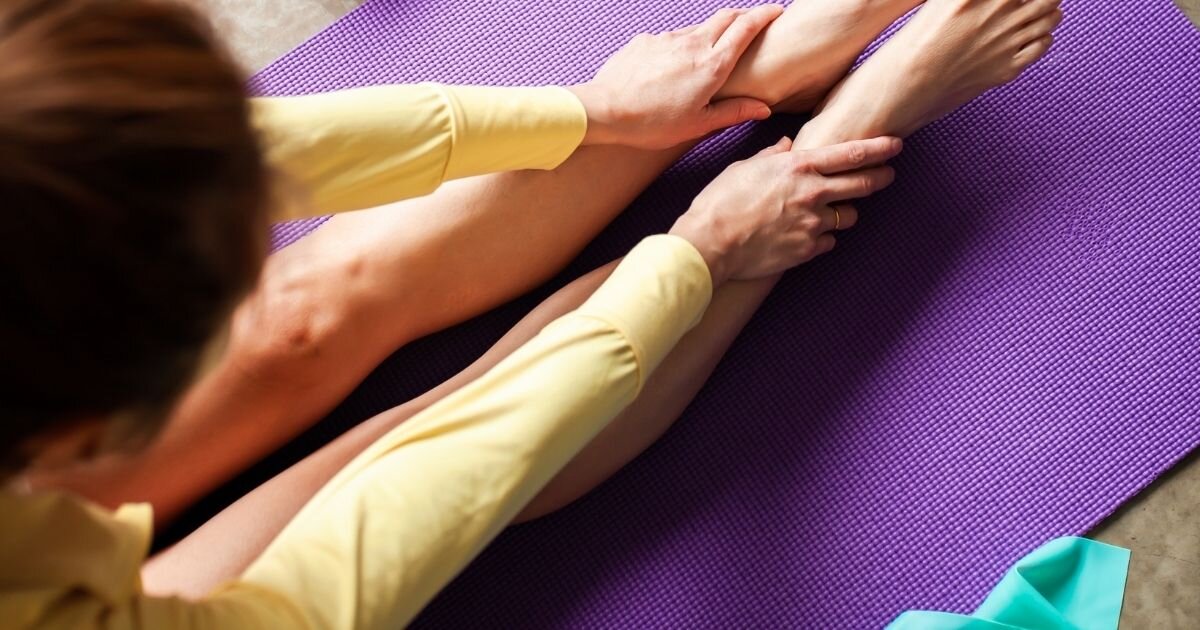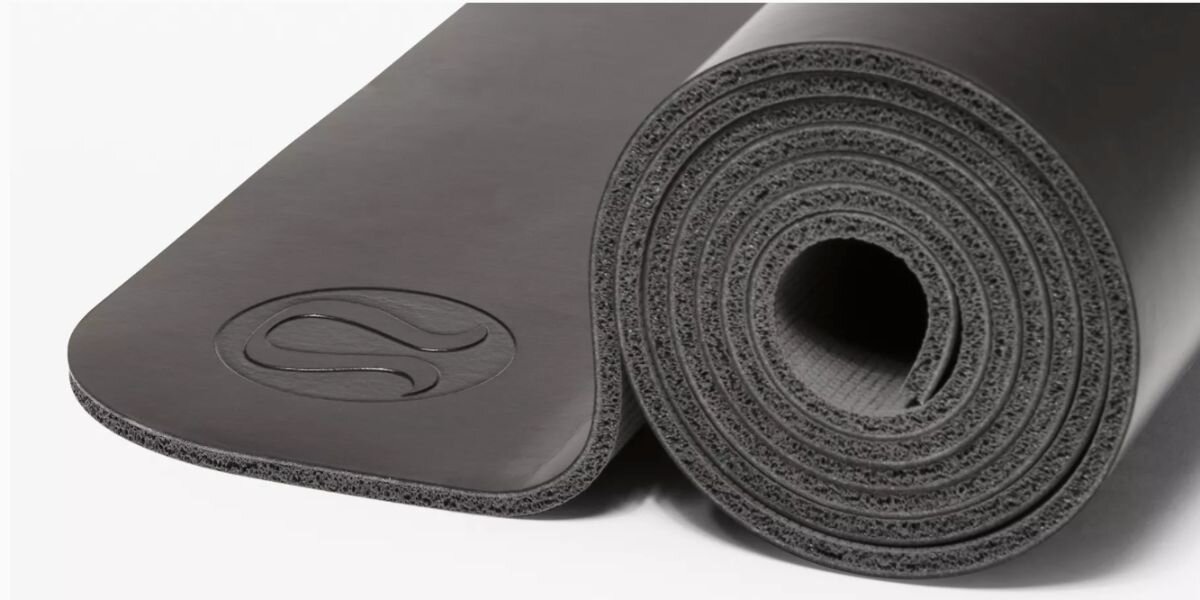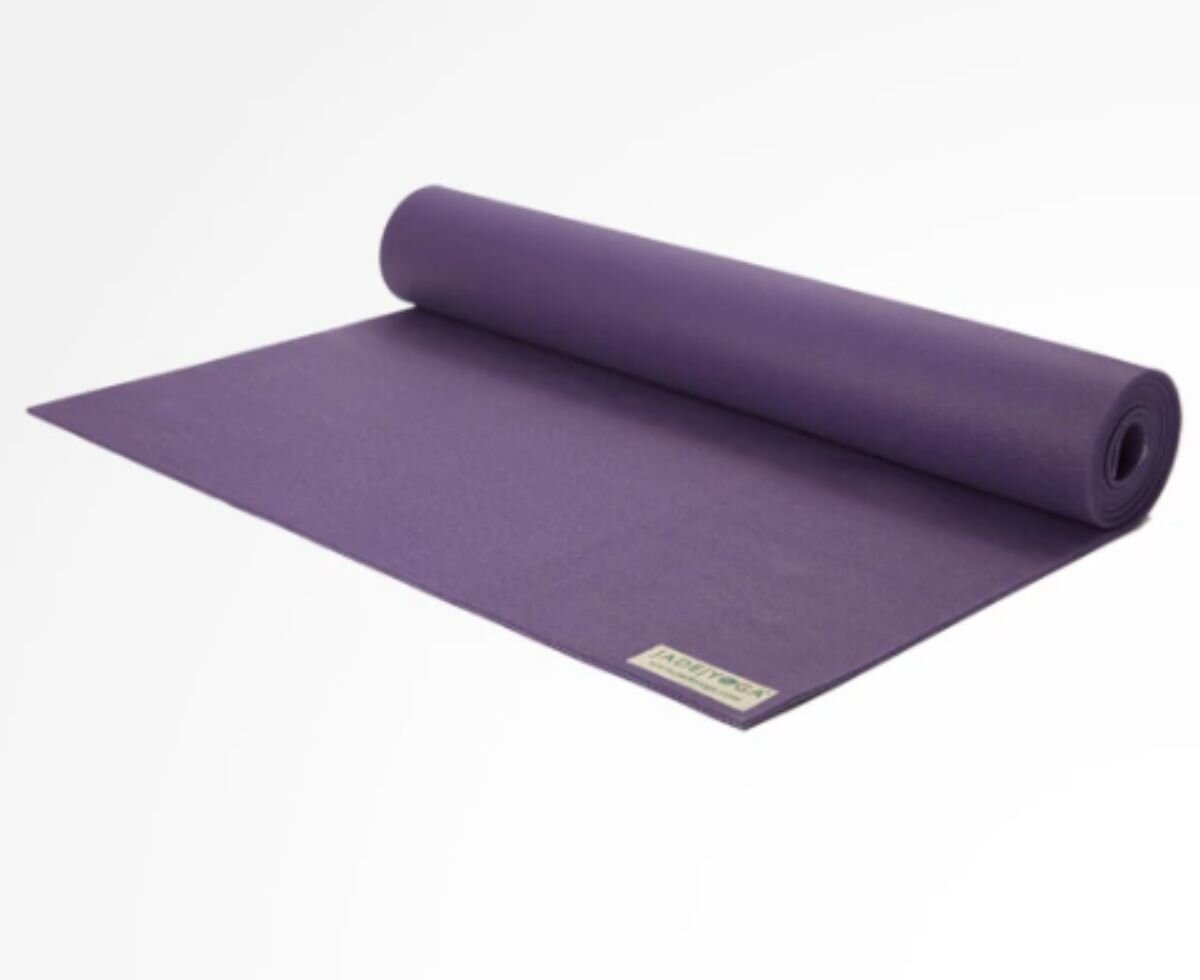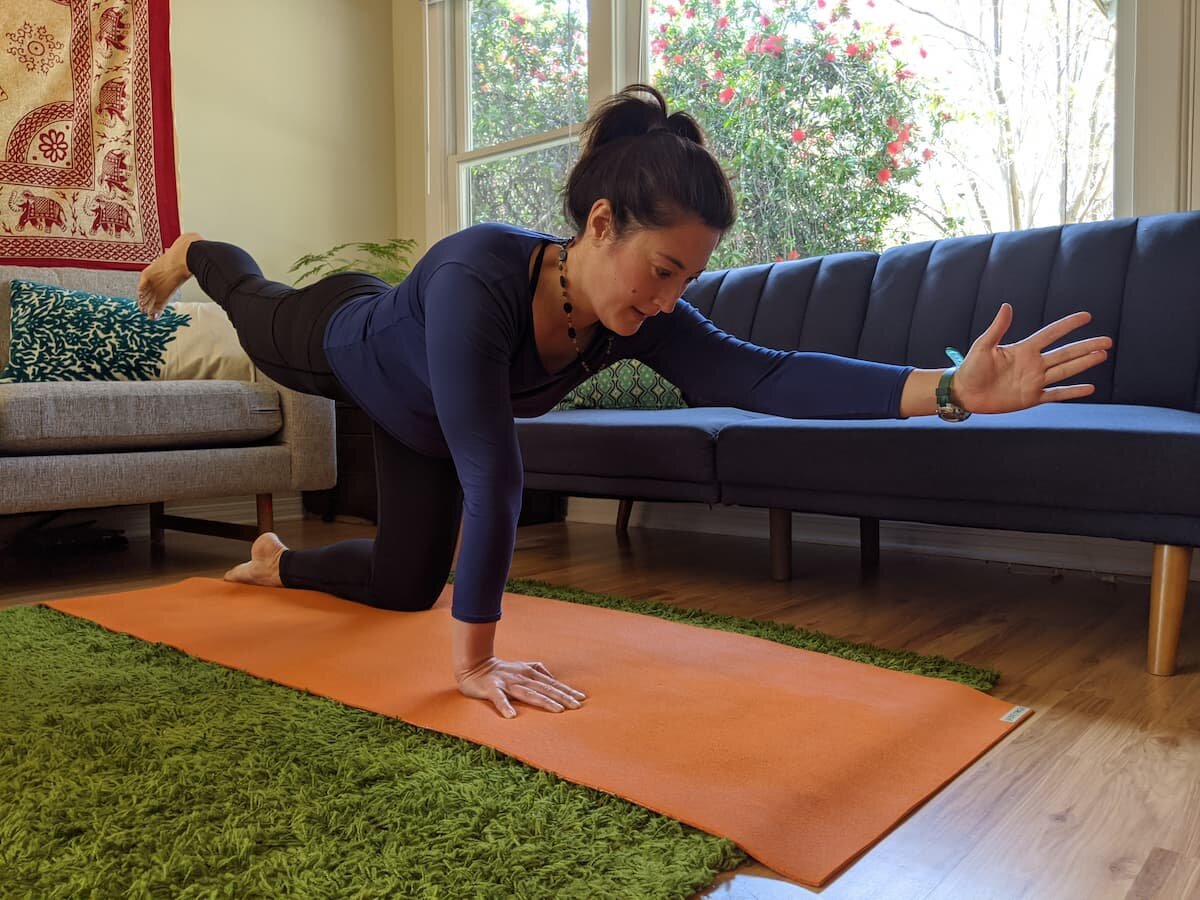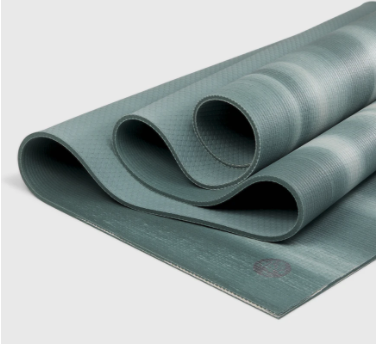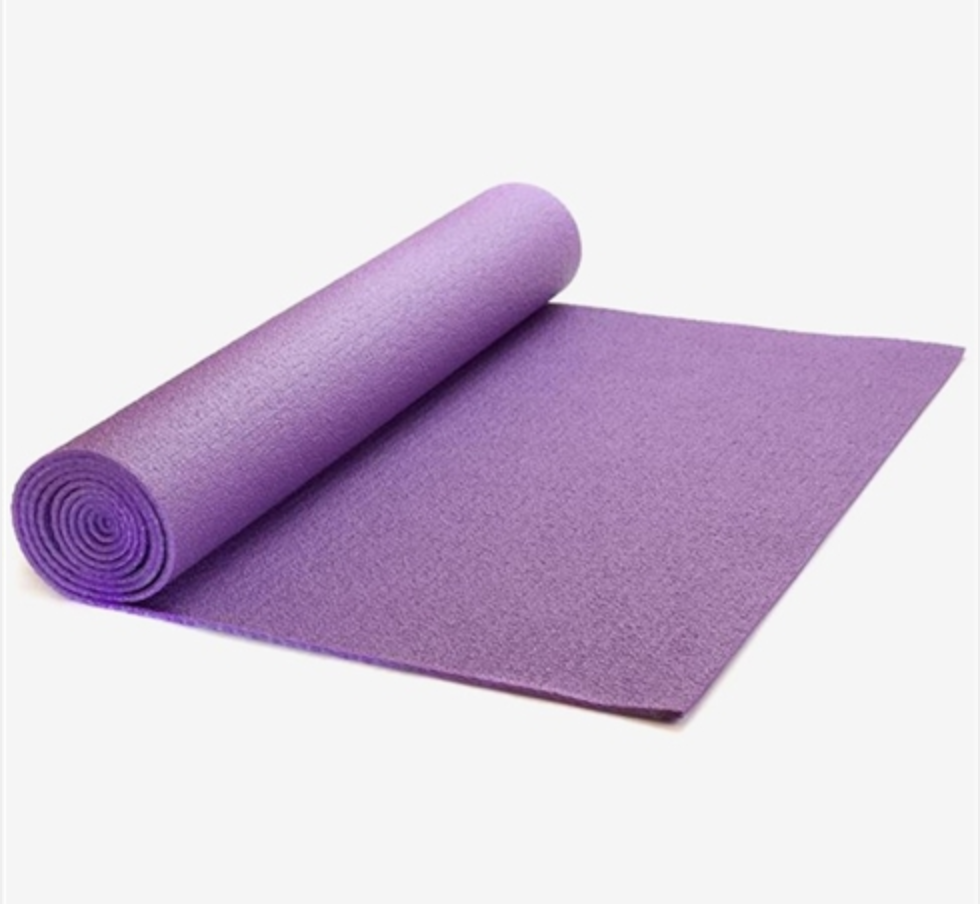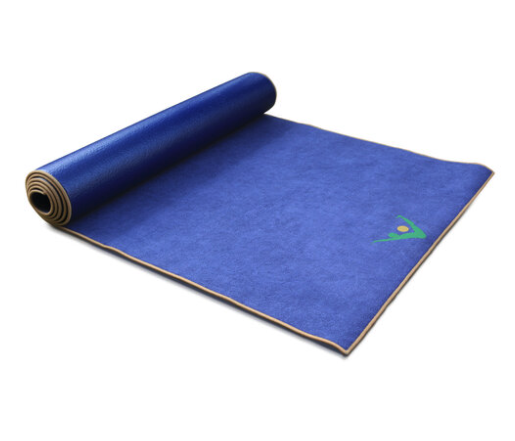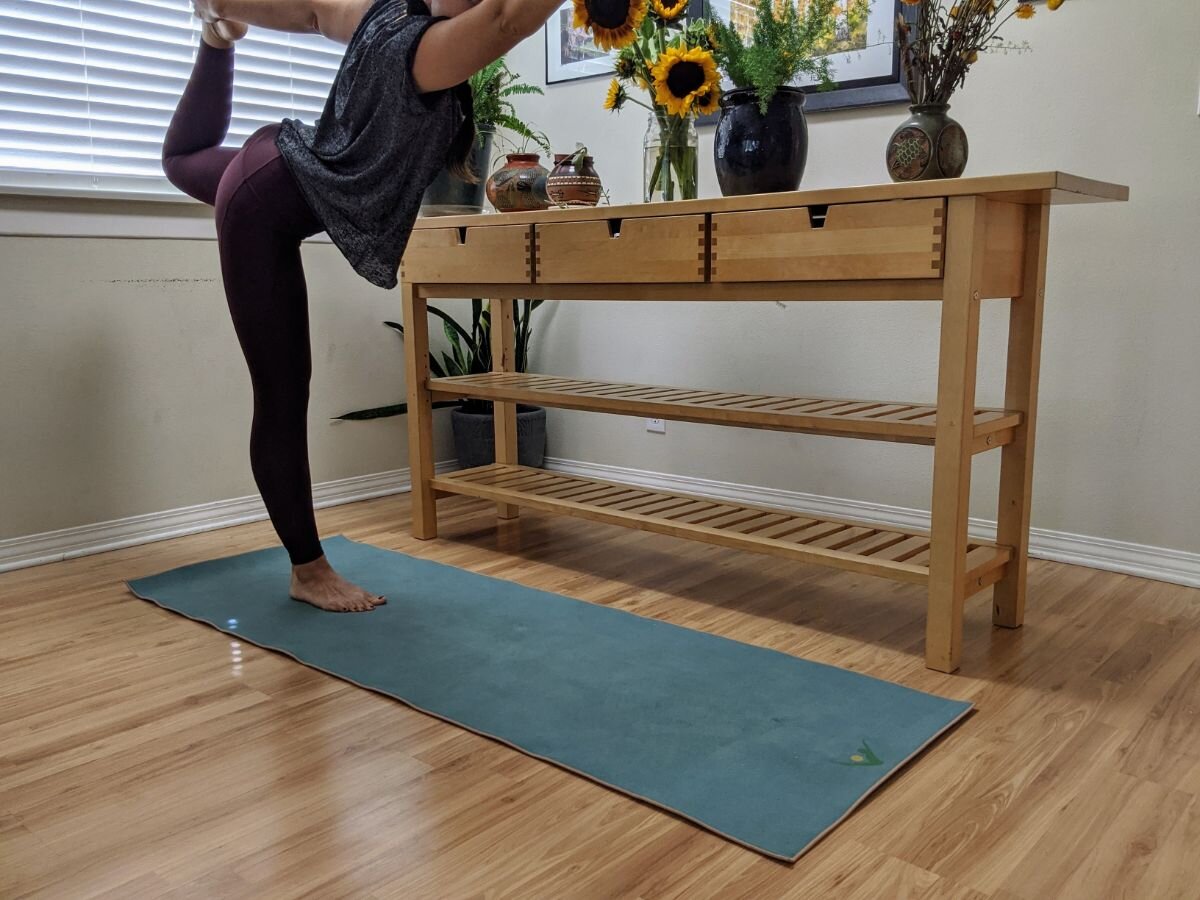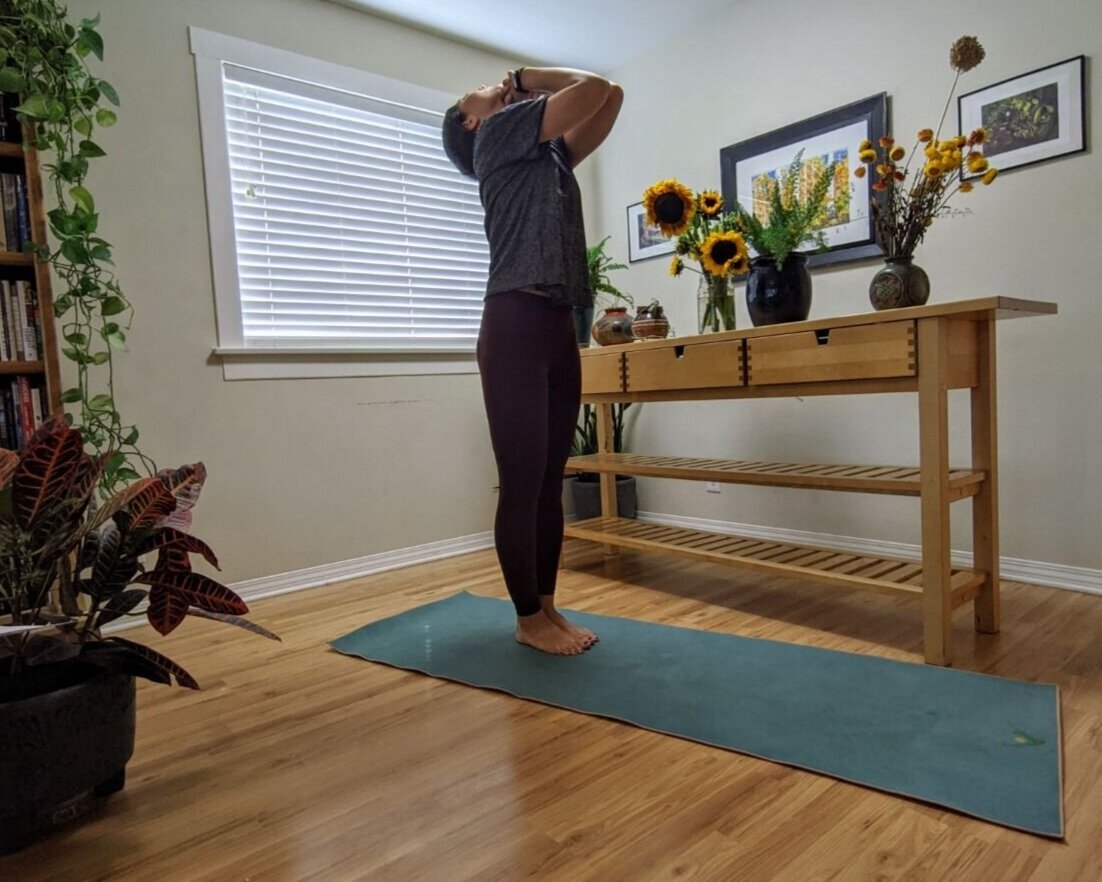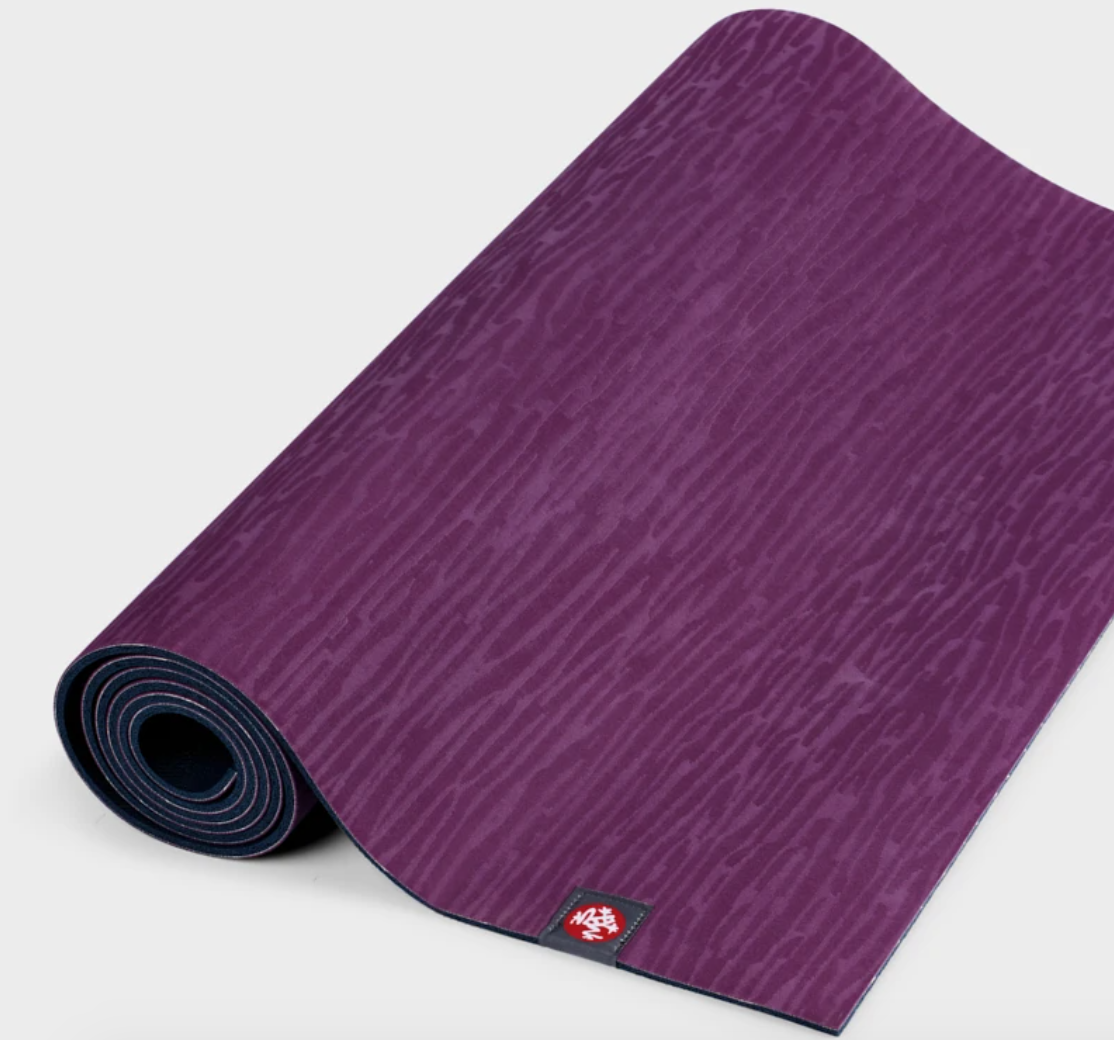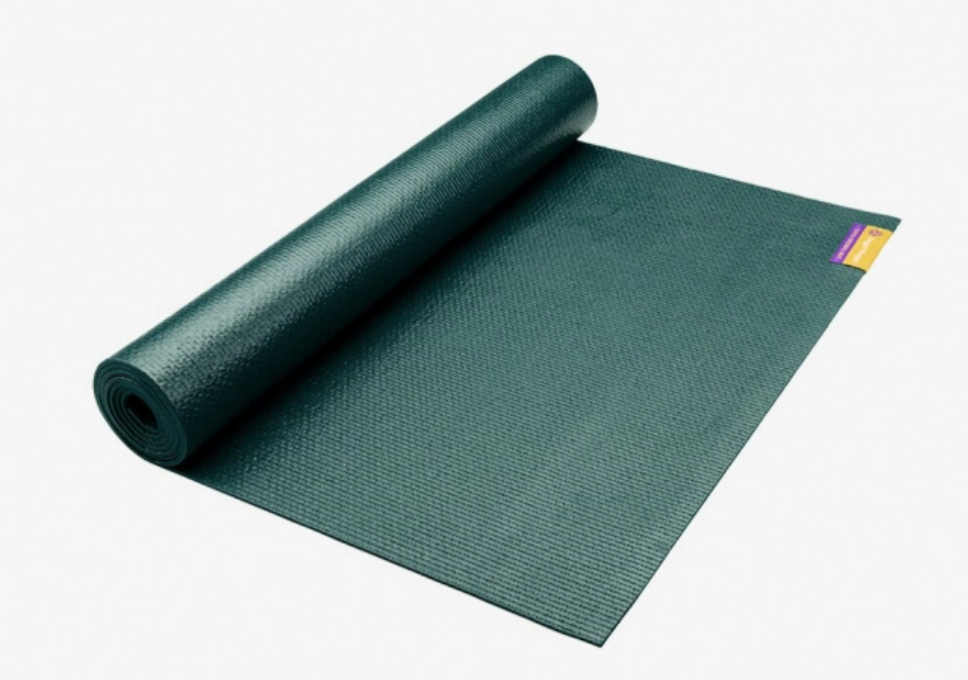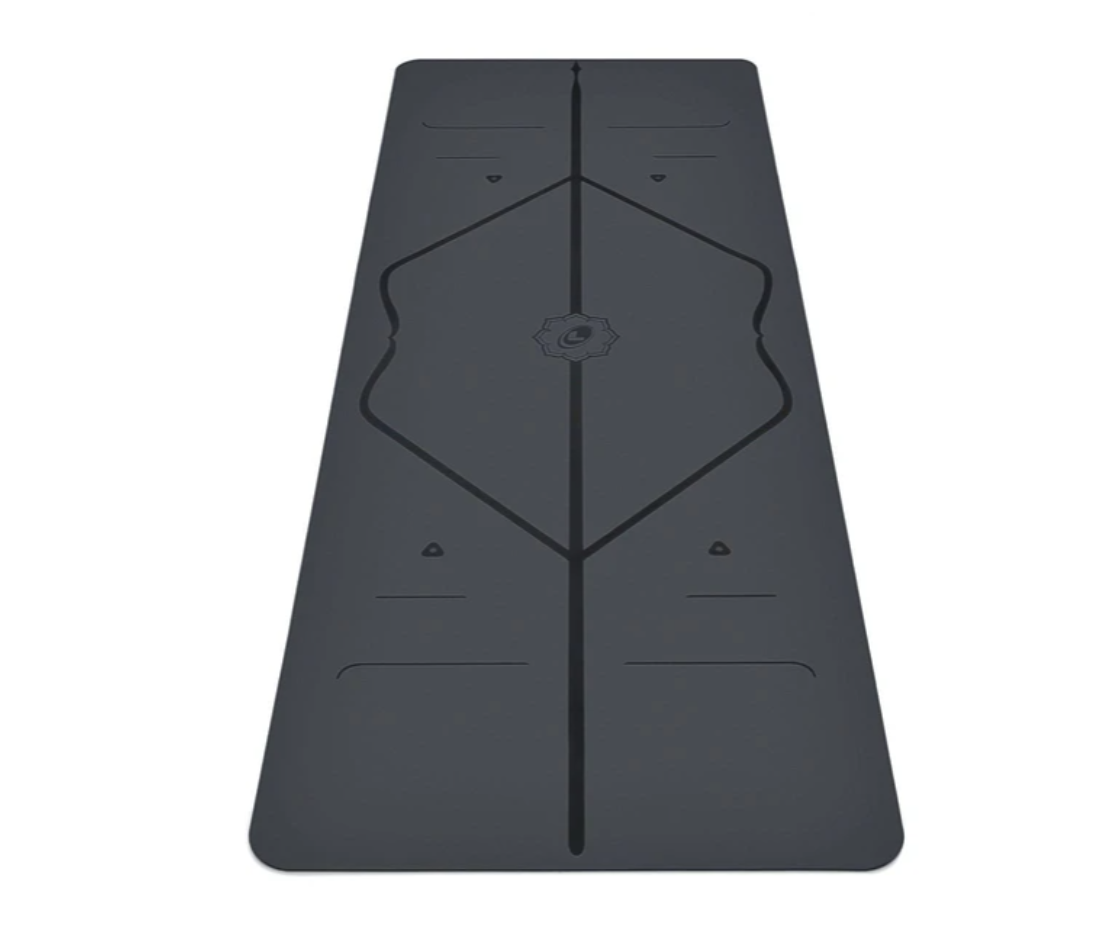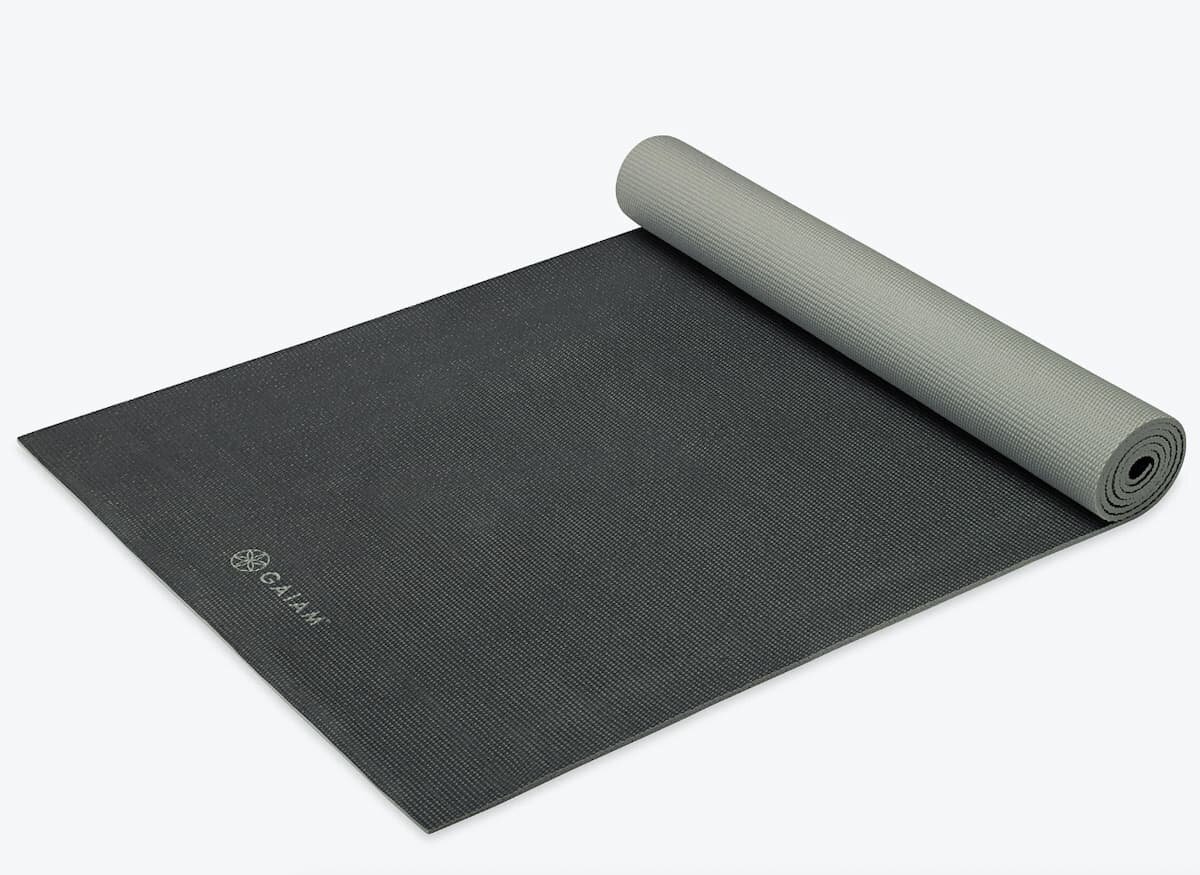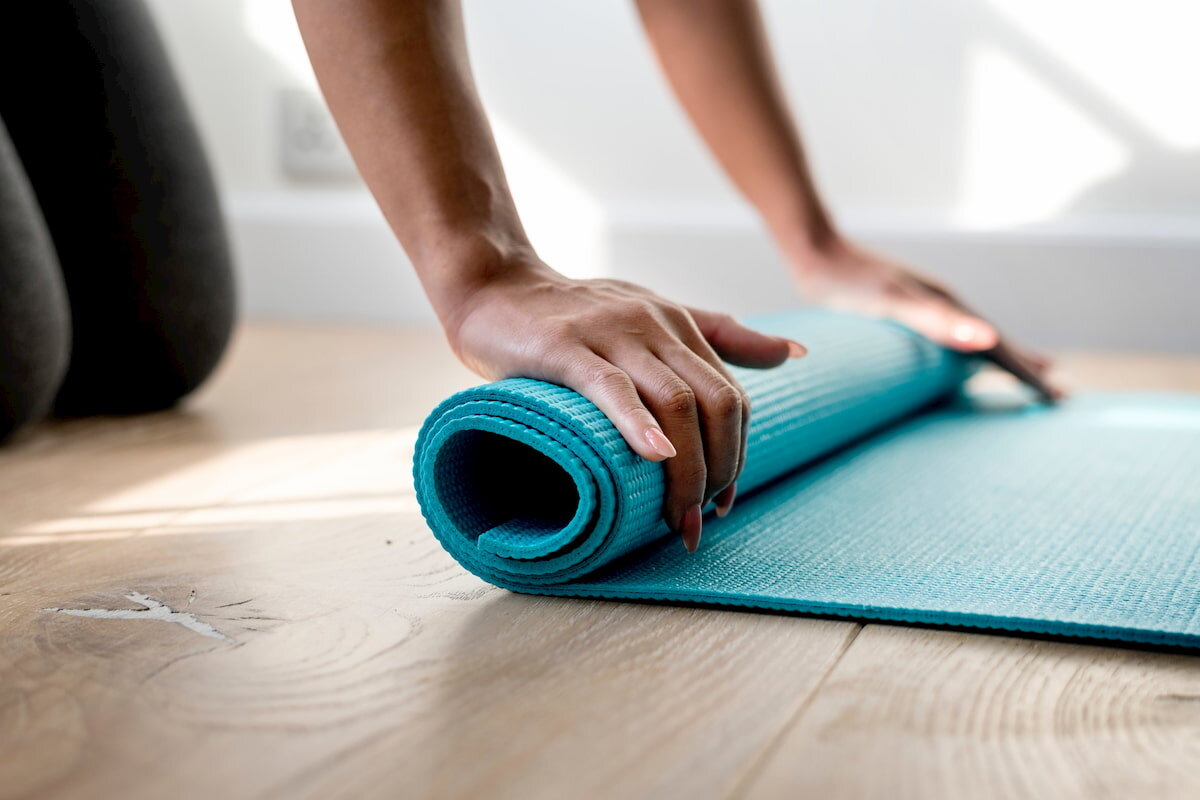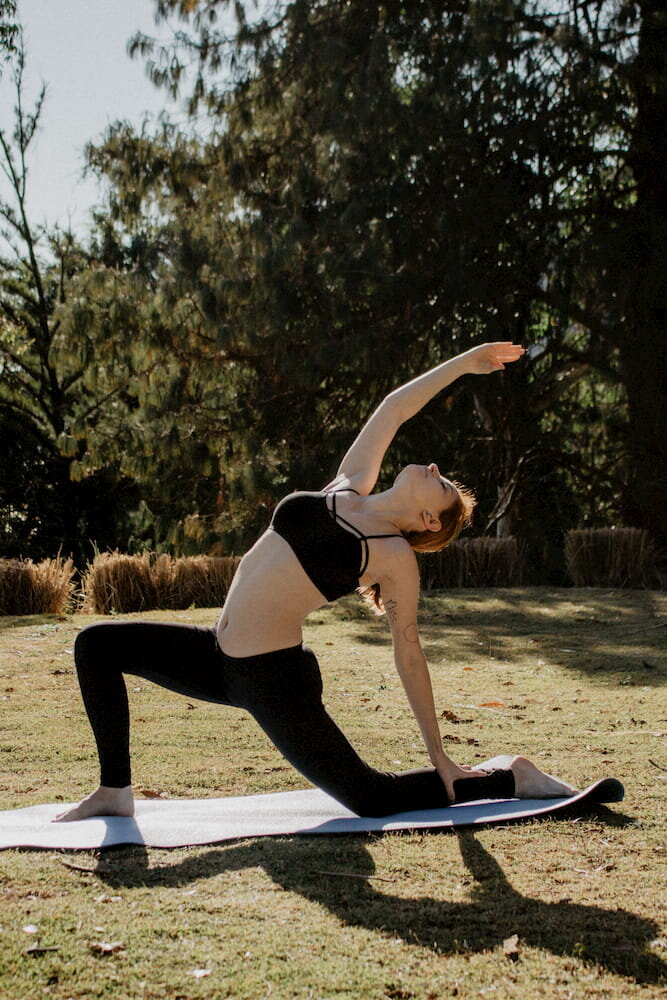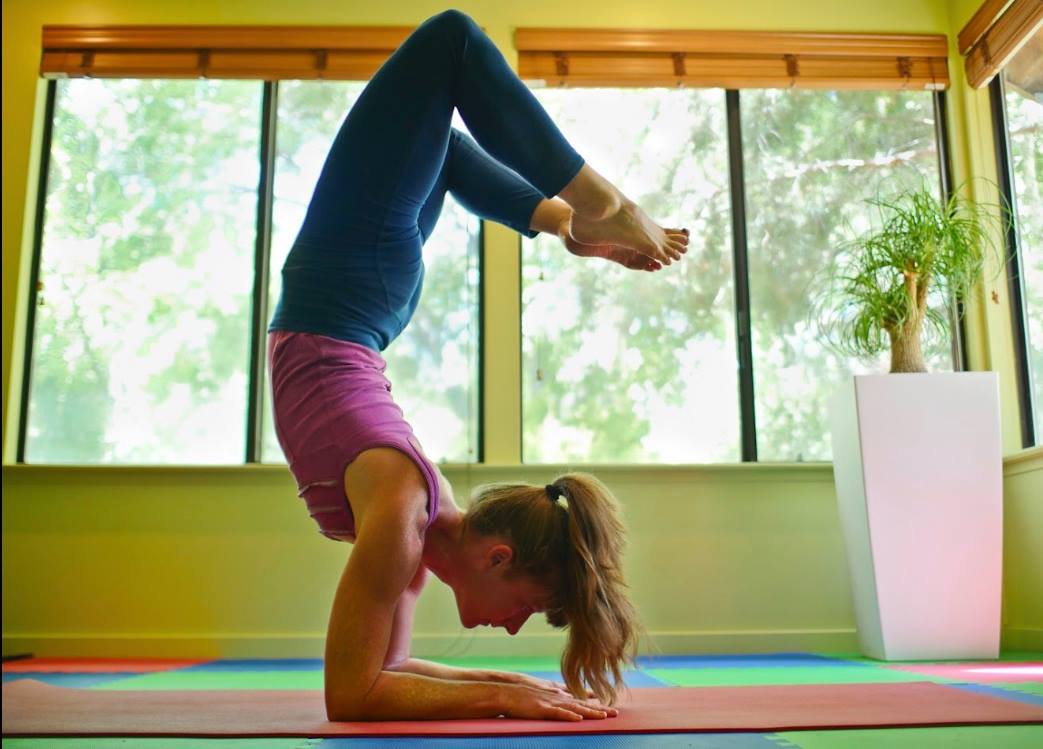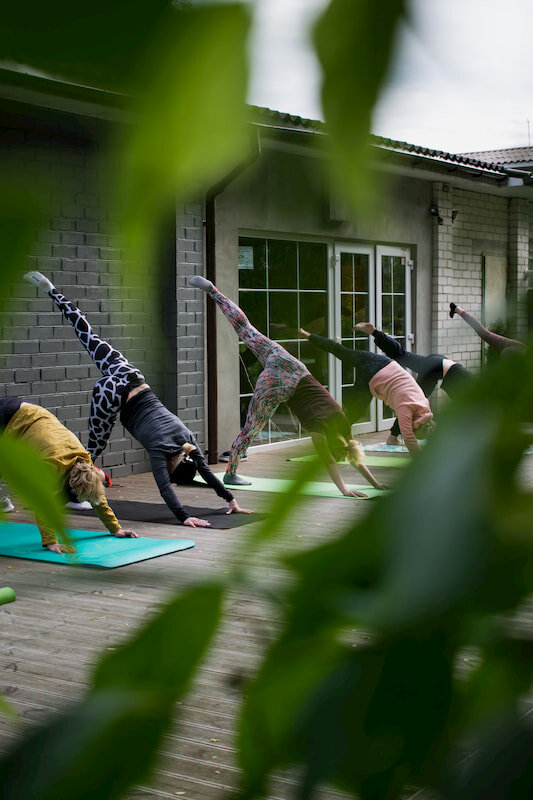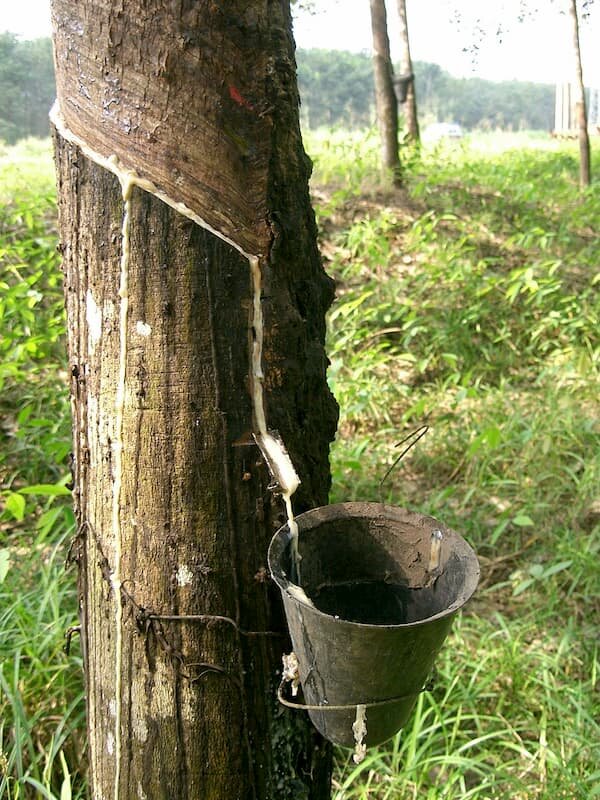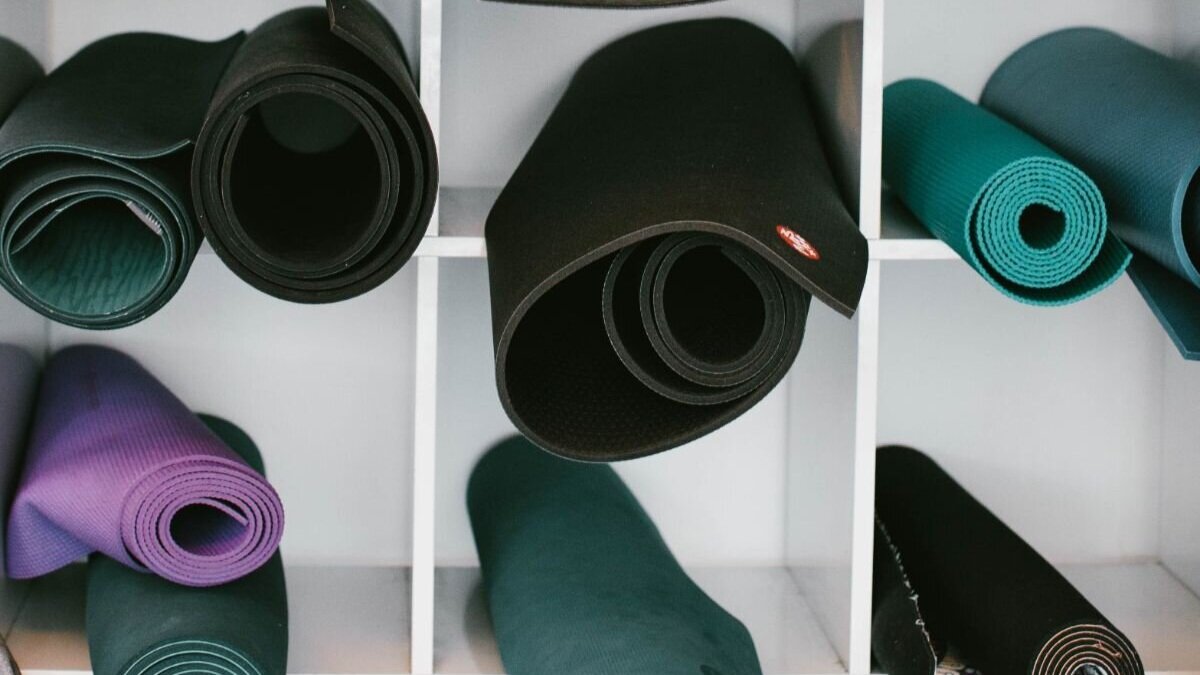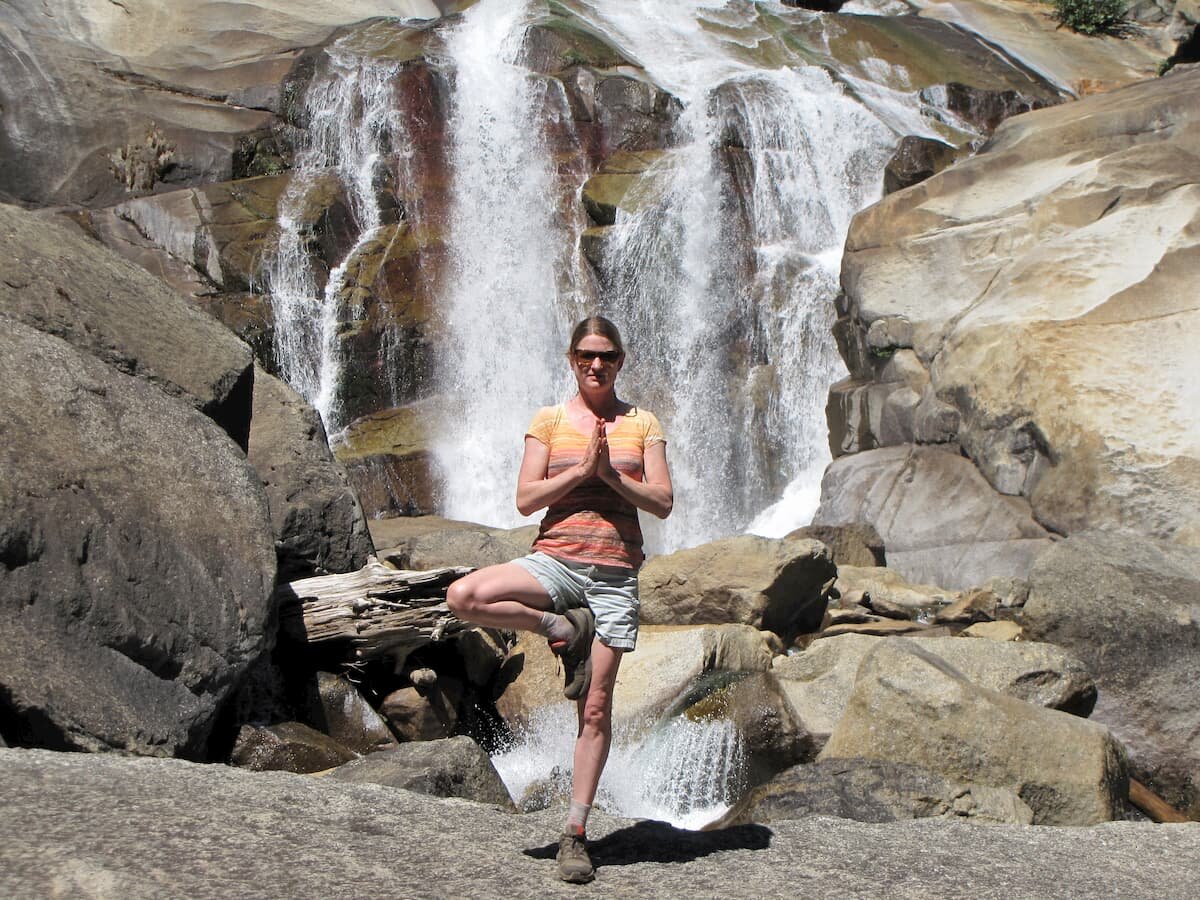Best Yoga Mats of 2023
THE TOP YOGA MATS FOR EVERY yoga style & BUDGET from an Iyengar certified Yoga Teacher
August 12, 2023
Not all yoga mats are created equal. The perfect mat can transform your practice, offering the grip, comfort, and support you need. As the demand for yoga continues to grow, so does the plethora of mat options, each promising to enhance your asanas and meditation. Navigating this vast expanse of choices can be overwhelming, but fear not. After 5 years of testing and decades of teaching experience, we have curated a list of the best yoga mats available, breaking down their features and benefits, to help you find that perfect yoga mat. Whether you're a seasoned yogi or just starting your journey, the right mat awaits.
These yoga mats top our list because of their materials, durability, traction, and positive reviews from media and customers alike. We also focused on yoga mats that are versatile and can be used for many types of yoga (and can double as an excellent exercise mat).
Our winners cover categories like best overall, best for hot yoga, best for outdoor use, best rubber-free yoga mat, most versatile yoga mat, and we also chose the best budget pick for those looking for a yoga mat under $50.
We create reader-supported, objective gear reviews independently selected by our editors. This story may contain affiliate links, which help fund our website. When you click on the links to purchase gear, we may get a commission — without costing you an extra cent. Thank you for supporting our work and mission of outdoor coverage for every body! Learn more.
Yoga Mats Comparison Table
| YOGA MAT | TREELINE AWARD | MATERIAL | PRICE | LENGTH (inches) | WIDTH (inches) | THICKNESS (mm) | WEIGHT (LBS) |
|---|---|---|---|---|---|---|---|
| Lululemon The Mat | Best Overall Yoga Mat Read why |
FSC-certified natural rubber, synthetic rubber, polyurethane, polyester, nylon | $98 | 71 | 26 | 5 | 5.2 |
| Jade Harmony Yoga Mat | Best Natural Rubber Yoga Mat Read why |
Natural rubber (no PVC, EVA, or synthetic rubber) | $92 | 68 | 24 | 4.75 | 4.5 |
| Manduka PRO | Best Thick Yoga Mat Read why |
PVC (Polyvinyl Chloride) | $138 | 71 | 26 | 6.35 | 7.0 |
| Manduka PROlite | Best for Outdoor Yoga Read why |
PVC (Polyvinyl Chloride) | $108 | 71 | 24 | 4.75 | 4.0 |
| True Blue Non-Slip Yoga Sticky Mat, 2mm | Best Budget Yoga Mat Read why |
High grade PVC (AZO, DOP, phthalate, and latex free) | $38 | 69-81 | 24 | 2 | 3.0 |
The Best Yoga Mats
THE BEST Overall YOGA MAT: LULULEMON THE MAT
Material: 55% FSC-certified natural rubber, 23% synthetic rubber, 15% polyurethane, 5% polyester, 2% nylon
Length: 71 inches
Width: 26 inches
Thickness: 5 mm (3 mm also available)
Weight: 5.24 lbs
After 4 years of testing, we’re confident in our choice of Lululemon’s The Mat as the best overall yoga mat. Our testers, external media, and customer reviewers agree that this mat excels at wet and dry traction, durability, comfort, and stability. The Mat is our overall best yoga mat because of its versatility, durability, and longevity — performing well for both yoga and exercise.
We also love that the rubber is certified by the Forest Stewardship Council (FSC) — the only yoga mat we tested with this certification. We’re hoping more yoga mat manufacturers follow suit, otherwise, there is a chance that the harvested rubber contributed to deforestation or human rights abuses.
Our tester, Treeline Review co-founder Naomi Hudetz, gives this Lululemon mat our highest ratings for great grip, thickness, and versatility. She tested the 5 mm thick version, but for those who like a thinner, lighter yoga mat, there is also a 3 mm version available.
One reason why Lululemon’s The Mat is highly rated by both experts and everyday reviewers is that it is reversible. Different textures and traction on either side make the mat versatile for different conditions and types of classes.
Lululemon's The Mat
The two sides of the Lululemon The Reversible mat.
Best Yoga Mat for Exercise
One advantage of The Mat is it is comfortable enough to use as a yoga mat and exercise mat. Naomi not only uses it for yoga, but she also uses it for HIIT training and weight exercises. The 5 mm cushion is enough for lunges but not too much for burpees. She did not need an extra cushion under her knees for intense yoga poses, such as pigeon pose. We’ve found that some yoga mats, like our winner for Best Natural Rubber mat, the Jade Harmony, are too thin for general exercise. So if you’re looking for one mat to do it all for your home gym, we highly recommend The Mat.
Naomi also likes that it rolls easily and stays rolled up. She lives in a small home where everything has its place. Having a yoga mat that takes up minimal space in the home is a must-have feature. To take up less space, Naomi stands The Mat up vertically on its end. Unlike some other yoga mats, The Mat doesn’t come undone. When unrolled, it’s the perfect size for her space at 26” x 71” (The (Big) Mat is available in a 28” x 84” size for taller people).
A common complaint about The Mat is that sweat stains are hard to get out. Naomi found the opposite to be true — she easily removed stains with a damp microfiber cloth and a little muscle. As a result, toxic cleaners are not needed, which she thinks is a bonus. However, it’s best to keep it clean rather than let the stains build up.
The Mat also has an "antimicrobial additive," which is supposed to "prevent the growth of mold, bacteria and fungi." We haven’t noticed any odor issues in more than four years of use.
It was named as best for most people by the NYTimes, Yoga Journal, Women’s Health, Outside Magazine, and it received second place in Outdoor Gear Lab’s rankings and hundreds of positive customer reviews.
The Mat is made of polyurethane, rubber, and latex, so it isn’t suitable for people with rubber allergies. If you have rubber allergies, we recommend the Manduka Pro, which is our winner for Best Thick Mat and Best Mat for Outdoor Yoga. It is rubber-free.
The major downside of this mat is that multiple reviewers describe it as having a strong rubber smell. Other common complaints are that at 5 lbs 7 oz, it is heavy and easily scratched. However, in over four years of use, we haven’t noticed an odor or any scratches. If weight is a concern, opt for the 3 mm version, which is 1.4 pounds lighter than the 5 mm version.
Whether you’re training for hiking or downhill skiing, we think lululemon’s The Mat is the best choice for most people.
THE BEST RUBBER YOGA MAT: JADE HARMONY YOGA MAT
Material: Natural rubber (no PVC, EVA, or synthetic rubber)
Length: 68-74”, also available in extra long 80”
Width: 24”, also available in extra wide 28”
Thickness: 4.75 mm
Weight: 4.5 lbs
The Jade Harmony Yoga Mat was one of the top picks in almost all the expert sites we reviewed for its stability, extra grip, spongy feel, and long-lasting durability. Our testers have been using the same Jade Yoga mat for 7 years, and it has remained stable and with great grip after hundreds of practices of all types of yoga.
The Harmony Mat was highly rated by Outside Magazine, Outdoor Gear Lab, NYTimes, Women's Health Magazine, Gymgearinfo.com, and Thoroughly Reviewed.
The Jade Harmony Yoga mat is made in the US of natural rubber, with no PVC (polyvinyl chloride), and is notable for the company’s environmental and sustainability practices.
In our practice on the Jade Harmony mat, we love it for being very grippy with the right amount of “cush.” At 4.75 mm thick, it’s right in the middle of the pack as far as thickness. It’s not too much to impact stability during standing poses, but most people find it enough for sitting poses.
Another advantage of this mat is that it has a wide offering of sizes — including an extra wide mat that goes up to 80” in length. It’s available in 11 colors.
Compare Prices of the Jade Harmony Mat
Professional reviewers also like the traction and stability of this mat. Reviewers also like the company’s environmental practices because the mat is made in the US in compliance with US environmental laws instead of the manufacturing laws of other countries. In addition, it is the only mat that is 100% natural rubber, and the company plants a tree for every mat sold.
Treeline editor Liz Thomas practicing yoga on the Jade Yoga Harmony mat. She’s had the mat for 5 years.
The New York Times/Wirecutter chose the Jade yoga mat as a close second to the Lululemon mat that also won our Best Overall Mat, Lululemon’s The Mat. Wirecutter’s reviewers liked the Harmony mat “because it absorbs a lot of moisture and helps maintain traction in sweaty situations.”
One potential mark against this mat is that it was described as having a strong rubber smell. Like with Lululemon’s The Mat, our testers noted a rubber smell on the Harmony Mat a day after purchase, but it subsided after the mat had some time to air out.
Additionally, some everyday reviewers found that the extra grip can be too grippy such that it can be hard to move from one yoga pose to another.
Some customer reviewers complained that if you leave your Jade Harmony mat in the sun, its stickiness goes away. Several Treeline team writers own this mat and agree. But really — we’ve accepted this as our own fault. No mat should be left in the sun (including in the back of a car), where UV rays can degrade. Salt can also degrade the natural rubber in this mat and cause it to shed. So if you like to do yoga on the beach or attend a beach yoga retreat, we recommend the Manduka Pro, our winner for Best Thick Yoga Mat and Best Yoga Mat for Outdoor Use.
The Jade Harmony mat has the second-highest Amazon customer rating we’ve seen, 4.6 out of 5 stars over more than 5,000 reviews. Similarly, our team members’ positive experience with this mat matches that of the professional reviewers’ findings of its grippiness and longevity. The Jade Harmony mat is a comfortable, grippy, and long-lasting yoga mat that continues to be a favorite we reach for even after half a decade of use.
THE BEST thick YOGA MAT: MANDUKA PRO
THE BEST YOGA MAT for outdoor use: MANDUKA PRO
Material: Polyester, PVC (Polyvinyl Chloride)
Length: 71”, extra long version is 85”
Width: 26”, extra large is 52”
Thickness: 6 mm
Weight: 7 lbs 13 oz
The Manduka PRO (and the lighter and thinner version called the Manduka PROlite) are our top winners for a non-rubber mat AND for outdoor use. As a yoga instructor, my personal mat of choice is the PRO lite yoga mat. Over years of constant use, I have found the Manduka to be extremely durable, stable, and sticky. Similarly, expert reviews give it top marks for durability and ease of care. Outdoor Gear Lab gave it the Top Pick for Comfort award.
It was also liked by Yoga Journal and Outside Magazine. Reviews praise it for having lots of padding. It’s the only mat we considered with a lifetime guarantee. That lifetime warranty with its thickness make it the best mat for people who practice yoga outside. Whether for outdoor yoga classes and retreats or for those who practice yoga in environments where the mat may be exposed to dirt, sand, sticks, leaves, or salt, a durable mat with plenty of cushion will make your practice more enjoyable.
The Manduka yoga mat is available in two versions: the PRO and the PRO lite yoga mat, as well as an extra-long version that is 85” long as well as an extra large version that is 52” wide.
At 4.7 mm thick, the Manduka PROlite is not a thick yoga mat like the PRO mat, but the material is the same. The PROlite is 4 pounds vs the 7 lbs, 13 oz on the Manduka PRO. I have found the PROlite to be extremely durable, stable, and sticky enough.
Compare Prices of the Manduka Pro Yoga Mat
Manduka Pro
Manduka Prolite
Although the Manduka PRO and Manduka PROlite mats are both made of PVC, Manduka says they are both “manufactured through a process that ensures no toxic emissions are released into the atmosphere.” Naturally, we’re somewhat skeptical (see our environmental section to learn more). Still, we are optimistic about how the Manduka mat is certified safe for human contact by OEKO-TEX®*, a material certification agency in Europe for the textile industry.
While both versions of the PRO are PVC yoga mats, Manduka says they are free of “toxic chemicals, dyes, and phthalates.” They don’t define toxic chemicals — so we aren’t sure what they mean by that. But we do know that dye manufacturing can generate waste, so we think it’s a good thing these mats are without. We discuss phthalates in our section on eco friendly yoga mats. The U.S. Consumer Product Safety Commission has identified them as a known hormone disruptor, so many yogis avoid them.
The author, Nina Pileggi, in down dog on the Manduka Pro lite mat.
Lots of reviews say the Manduka PRO is slippery when wet and dry. However, my personal experience is that it has good traction for a non-heated class. For a heated class, we recommend the Aurorae Synergy, our winner for Best Hot Yoga Mat.
The other complaint about this Manduka mat is that it is heavy and bulky. It is a thicker mat — but we find that to be an advantage. Many yogis appreciate the extra cushion for kneeling poses. However, the weight may be a concern for bike or walking commuters. If you suspect you’ll be biking or walking to your yoga practice, we recommend a less bulky mat like the PROlite version of this mat, or the True Blue yoga mat, our winner for Best Budget Yoga Mat.
The heaviness and bulkiness of this mat are precisely why we recommend it for outdoor use. You need extra protection from rocks, sticks, and uneven terrain when doing yoga outside. The Manduka PRO is a thicker mat that provides 0.25 inches of cushioning — the most of any mat we considered. Just be sure to get it in a lighter color; in full sun, dark colors may become too hot for bare hands and feet.
THE BEST YOGA MAT under $50: TRUE BLUE YOGA MAT
THE BEST budget YOGA MAT: TRUE BLUE YOGA MAT
Material: High grade PVC (AZO, DOP, phthalate and latex free)
Length: 69-81”
Width: 24”
Thickness: 2, 4 mm
Weight: 3 lbs
We like the True Blue non-slip yoga sticky mat for those just starting out or those who like a thin, grippy mat for standing poses. This mat did not show up in any reviews, but we recommend it over mainstream budget yoga mats because of our personal experience with it. It has excellent grip and (unique among budget mats) a long-lasting life. The True Blue Yoga mat is also good for standing poses because it is a thinner mat (2mm).
As a former yoga center owner, these were the first yoga mats I bought to have on hand for student use. The mats are sticky and extremely durable - some of the mats lasted 15+ years at the yoga center after being used by hundreds of students. Some chunks did appear after many years of use, but we think that is to be expected after that much use and that many years, especially for a PVC mat of this price.
The author in Trikonasana (Triangle Pose) on the True Blue yoga mat, our budget pick. Photo courtesy Nina Pileggi.
These yoga mats can be ordered in three different lengths. They are manufactured in Germany in a zero-waste, zero-emissions process. They are made from high grade PVC (AZO, DOP, phthalate and latex free), so are suitable for those allergic to rubber and yogis avoiding Phthalates.
The one complaint we have about this PVC yoga mat is that it can be too thin for some people’s knees. It’s very thin (2mm). For floor work, more padding might be needed. True Blue does offer a 4 mm version as well.
True Blue isn’t a major yoga company, so we suspect they don’t have the marketing budget that some of the other “budget” mat companies have. But given our personal experience, there isn’t a better budget mat to be had.
True Blue Non-slip Yoga Sticky Mat
BEST YOGA MAT FOR HOT YOGA: AURORAE SYNERGY
Material: Microfiber towel top non slip surface bonded to a PER (Polymer Environmental Resin) bottom.
Length: 72”
Width: 24”
Thickness: 5 mm
Weight: 3.6 lbs
We think the Aurorae Synergy 2-in-1 yoga mat is the best mat for hot yoga and yogis with sweaty hands. Hot yoga is often practiced at 105F with 40% humidity, so it results in more sweat and moisture from the air than other kinds of yoga. The Aurorae Synergy merges a rubber yoga mat with a yoga towel to create a 2-in-1 mat system well suited for stability and grippy traction when wet.
The Aurorae Synergy is a 2-in-1 mat designed with a microfiber towel top surface that is bonded to a PER (Polymer Environmental Resin) bottom. This system works for hot yoga because the towel absorbs sweat. Meanwhile, the nonslip surface on the bottom of the mat is designed to prevent movement from sweat-induced moisture. The result is a mat that actually grips better when wet, the opposite of most other yoga mats. This makes it ideal for practices like hot yoga, hot vinyasa, and Power Yoga, which are done in rooms with increased heat and humidity.
Aurorae Synergy Hot Yoga Mat
Hot yoga mats work best when wet from humidity or sweat. They may not grip as well when dry, which can make certain poses more challenging. Photo by Liz Thomas
Many hot yoga practitioners will soak up their sweat and the increased humidity by placing a separate yoga towel on top of a rubber yoga mat.
With the Aurorae Synergy, the yoga towel is integrated into the mat, replacing the need for a separate mat. This means there is one less thing for you to carry to class.
The integrated system on the Aurorae also means that your yoga practice will be more stable with a smoother surface than a towel, which requires care to keep flat, prevent bunching, and stay gripped to the mat.
Most yoga towels have small grips to stick to the mat so the towel doesn’t slide. The Aurorae, in contrast, is a single layer with no separation of the towel from the mat, meaning it cannot ever bunch or slide.
Some customers complained that the Aurorae does not have as much cushion as a regular 5mm mat and that it is somewhat slippery when dry; this was also the case in our experience. Hot yoga mats are not designed for dry yoga use. We recommend this mat for hot yoga, hot vinyasa, summer outdoor yoga, or power yoga classes where humidity and heat are added to the room as part of the practice. This mat is designed to grip when wet only. However, we’ve also used this mat for gentle yoga or yin or restorative yoga, where great grip is not required.
Some hot yoga practices, like Bikram yoga, start each class with Parayma, Standing Deep Breathing. Photo by Liz Thomas.
Should you get a hot yoga mat?
The Aurorae Synergy is designed for hot yoga and grips best when wet. Unless you practice hot yoga exclusively, go with a different mat that will grip when dry and purchase a separate yoga towel to use on top of it for your hot yoga classes. However, if you a yoga enthusiast who is ok owning two mats (one for hot yoga and one for other kinds of yoga) the integrated mat of the Aurorae Synergy is easier to use than a mat+yoga towel combination.
Our tester did note, however, that (as with anything that enters a hot yoga room) odor from the moisture in the air can develop over time. Although she has never had an odor issue with other kinds of yoga, hot yoga can cause odor on yoga pants, sports bras, and mats.
The Aurorae mat comes with detailed wash instructions. Unlike some other mats, it can be washed in a front-loading washing machine. Like most yoga mats, it can also be washed in a tub. Aurorae recommends washing with a soft brush, warm water, and non-oil-based detergent to clean. After each practice, they also recommend using a microfiber towel to wipe away sweat.
We purchased this mat and have been practicing hot yoga and hot vinyasa with this mat for a year. The Aurorae Synergy has the highest rating on Amazon that we saw: 4.6 out of 5 stars on over 1,000 reviews. Outdoor Gear Lab ranked it #3, saying it has “great traction when wet, easy to care for when doing hot yoga.” While the Aurorae Synergy mat isn’t for every yoga practice, it works well for practices where wet traction is required, and frequent washing needs to be easy.
Don’t forget your water bottle and electrolytes for your hot yoga practice!
Honorable Mentions
Manduka EKO Yoga Mat
Material: Biodegradable non-Amazon harvested rubber
Length: 71 inches
Width: 26 inches
Thickness: 5 mm
Weight: 4.5 lbs
The Manduka eKO Yoga Mat has great traction and is comfortable and stable for standing poses. It’s a two-layer rubber mat that is designed to be extra durable. The bottom layer is the typical open cell construction found in most yoga mats, but the top layer is a sealed cell, which is meant to increase durability and impermeability to keep out water and sweat. It’s made of biodegradable non-Amazon harvested rubber.
However, the Manduka eKO was on the heavier side and the most expensive mat we considered. It also had among the lowest customer reviews of any of the mats we considered. Ultimately, we think our Overall Winner, Lululemon’s The Mat, is just as comfortable and stable, plus it has the advantage of being reversible; it also has much higher reviews. For those who prefer a Manduka mat, we think you’re better off with the Manduka Pro, our winner for Best Outdoor Mat.
Compare Prices of the Manduka Eko Yoga Mat
Gaiam Classic Yoga Mat
Material: PVC - free of DEHP, DBP, BBP, DINP, DIDP and DNOP
Length (inches): 68 inches
Width (inches): 24 inches
Thickness (mm): 5 mm
Weight: 3.5 lbs
The Gaiam Classic Yoga mat is an inexpensive and durable yoga mat. However, testers and customer reviews note that it has poor traction-both when wet and when dry. It’s also not very stable. While it wins an award from Outdoor Gear Lab, they clearly state that it is solely due to its low price. One benefit of the Gaiam Mat is that it is offered in a lot of colors and designs. But we don’t think that color and design is the most important thing to look for in a yoga mat.
As a yoga instructor and studio owner, I knew about the small brand True Blue as a source for supplying yoga studios with affordable mats. We think that the True Blue Non-slip mat we recommend as our budget pick is a better option than the Gaiam mat for practitioners who want an affordable mat. See our review above.
Compare Prices of the Gaiam Classic Yoga Mat
Material: Heavy metal & phthalate-free PVC
Length: 68”
Width: 24”
Thickness: 3.2 mm
Weight: 2.4 lbs
The Hugger Mugger Tapas Original Yoga Mat claims to be the original sticky mat and is the first US-made yoga mat, where it has been manufactured for almost 30 years. The word ”tapas” is a Sanskrit word used in yoga with roots in Indian religions. The Hugger Mugger is a budget PVC yoga mat that is competitive in price with the True Blue budget mat we recommend as our Budget Winner, as well as with the Gaiam yoga mat. The Hugger Mugger Tapas contains no heavy metals or phthalates. It's what many people think of when they think of a "standard mat."
However, customer reviews were among the lowest we’d seen of any of the mats we considered. Since we started working on this guide, the original listing and its customer reviews have been deleted, but we don’t think the mat has been updated. We also think that for the price, the True Blue Non-Slip mat is a better option.
Compare Prices of the Hugger Mugger Tapas Original Yoga Mat
Material: Natural rubber, eco-polyurethane
Length: 72.8 inches
Width: 26.7 inches
Thickness: 4.2 mm
Weight: 5.5 lbs
The Liforme Yoga mat is a European mat that has received some attention for being a fully biodegradable mat. The Liforme mat is known for its grippiness and comes with markers to guide hand and foot placement.
However, the Liforme mat is almost twice the price of every other yoga mat in this guide. We think most people will be served by the mats we recommend without paying the extra premium.
View the Liforme Yoga Mat
Material: PVC
Length: 78 inches
Width: 26 inches
Thickness: 5 mm
Weight: 3.7 lbs
The Gaiam Athletic Yoga Series dynaMAT Xtra-Wide Mat is Gaia’s men’s fitness line. This PVC yoga mat is 10” longer and 2” wider than a standard yoga mat to accommodate taller bodies. The dynaMAT is reversible but available in black and grey only. We considered this mat as an option for taller individuals, but at 3.1 out of 5 stars on Amazon at the timing of writing, it has the lowest customer satisfaction of any yoga mat we researched for this article. Since then, the original listing has been deleted, but we still think you will be better off with one of the other mats we recommend.
Compare Prices of the Gaiam Athletic Dynamat Xtra-Wide Mat
The author never misses an opportunity to practice yoga outside. Photo courtesy Nina Pileggi.
AUTHOR’S EXPERTISE/Why you should trust us
In addition to professional reviews, I relied on my own experience. I’ve taught Iyengar Yoga for over 19 years as a Certified Iyengar Yoga Instructor.
I rank as the second highest level among Certified Iyengar Yoga Teachers in Oregon, the state where I live.
For 18 years, I was the director of Sunset Yoga Center in Portland, Oregon (previously in Cedar Mill, Oregon). In addition to being a yoga instructor, I oversaw and mentored nine other yoga instructors. Now, I am a yoga instructor at the quarterly Iyengar Yoga Teacher Education program, teaching other yoga instructors to prepare for their certifications.
I hold a three-year therapeutic yoga teacher certification sponsored by Iyengar Yoga Therapeutics, am a Certified Yoga Therapist, and have made five trips to Pune, India to study with the Iyengar family.
I serve on the Iyengar Yoga National Association of the United States certification committee.
Choose a yoga mat that has adequate cushioning and a grippy surface.
Buying Advice / WHAT MAKES A GOOD YOGA MAT
We think a good yoga mat should be durable, have good traction, be of adequate size, and be made from environmentally friendly materials. We decided on these criteria based on the professional reviews we read and the most frequent comments in user reviews about yoga practitioner needs. We also considered this author’s 20+ years of teaching yoga and seeing what students like in a yoga mat.
Durability is an important feature to look for in a yoga mat if you plan to practice outdoors.
DURABiLity
Yoga mats can and should last for years. Inferior mats often “chunk” away when your jewelry and/or finger and toenails touch that mat during practice. Most yoga mats that have chunked away end up in landfills. To minimize how often you’ll need to toss away your mats, choose a mat that is more durable. (When your durable mat does reach the end of its life, we have some suggestions of what to with old yoga mats instead of tossing them).
To get the most life out of your mat, we recommend regularly cleaning your mat and keeping it out of direct sunlight. If you have jewelry that might tear the mat, consider removing the jewelry while you practice.
Getting mats to stay flat is especially difficult outside. But this photo exhibits what can happen if when a mat doesn’t stay flat.
TRACTION & Grip
Many yoga poses need “stickiness,” aka good traction from the mat. Downward Facing Dog and Triangle pose go a lot better when your hands and feet aren’t sliding. If your feet or hands slide when they should stay put in a yoga pose, your mat isn’t doing its job, and you will quickly toss it in the trash. If you are doing downward dog on an ice skating rink, it would be impossible no matter how hard you work. The same is true for a really slippery mat.
Occasionally while working on a yoga pose, some students opt to put their mats aside sometimes (if we are working on a non-slippery floor like hardwood) to get better sensitivity in the feet. But even if you like sensitivity in the feet, better to have a good mat with the option to go mat-less than to have a mat that never sticks.
DOES IT STAY FLAT?
A good mat should roll out reasonably flat when unfurled and become completely flat within a minute or so. A flat mat is safer (you won’t trip over it). It also means the material is more resilient.
In addition, we think you should choose your mat based on your own personal needs, including what type of yoga you practice, your body, and how you get to-and-from your yoga practice. See our how to choose section to find the best mat for you.
Material
The material of a yoga mat can greatly influence the mat's texture, stickiness, sponginess, durability, and eco-friendliness. The best material for your yoga mat largely depends on your personal preferences, the style of yoga you practice, and your environmental concerns. For example, if you prioritize eco-friendliness, a natural rubber mat might be suitable (if it’s FSC certified). If you're looking for durability and stickiness, PVC remains a popular choice. Always consider your needs and the mat's primary purpose when selecting a material.
Here's a breakdown of the most common yoga mat materials and their characteristics:
1. PVC (Polyvinyl Chloride)
Pros:
Durable, soft, and spongy feel.
Provides excellent grip and stickiness, reducing the chance of slipping.
Typically less expensive than other materials.
Cons:
Not biodegradable or recyclable.
Can release harmful toxins when manufactured and over time.
Heavy and not ideal for travel.
2. TPE (Thermoplastic Elastomer)
Pros:
More eco-friendly compared to PVC.
Lightweight and soft to the touch.
Often UV-resistant and highly durable.
Cons:
Can degrade faster than PVC.
Might not provide the same level of cushion as PVC.
3. Natural Rubber
Pros:
Eco-friendly, made from renewable resources.
Offers excellent grip and cushioning.
Biodegradable.
Cons:
Can have a distinct smell that some users find off-putting.
Not suitable for those with latex allergies.
Tends to be heavier than TPE mats.
Thickness
Yoga mats range in thickness from 1.5 to 6+ mm. The thinnest yoga mats are generally used for travel purposes, but thicker isn’t always better. We have a detailed discussion about yoga mat thickness below.
Size and Weight
Yoga mats are typically around 68 inches (173 cm) long and 24 inches (61 cm) wide. These will fit most practitioners for a variety of poses. However, if you’re taller, you should look for a longer mat, usually around 84”. Keep in mind that longer mats will take up more floor space in a yoga class.
Most yoga mats are 24” to 26” wide, which is sufficient for most people. However, if you have wide shoulders, you could consider a wider mat — some are up to 36” in width.
Here are some factors to consider when choosing a yoga mat size:
Your Height: If you're taller than average, a longer mat might be more comfortable.
Practice Space: Ensure that the mat fits comfortably in your practice space, especially if you're practicing at home or in a smaller studio.
Type of Practice: If you engage in more dynamic practices with wider stances or extended poses, a larger mat might be beneficial.
Portability: If you plan to carry your mat regularly, consider the weight and ease of transport. Travel mats or standard-sized mats might be preferable.
Comfort: Some individuals simply prefer having a larger surface area to feel more comfortable and unrestricted.
Yoga Mat Thickness
Yoga mat thickness is one of the key considerations when purchasing a yoga mat. The thickness you choose can influence your practice in several ways, from comfort to stability to portability. Here's a detailed discussion on yoga mat thickness:
Common Thickness Options
Ultra-thin (1/16-inch or 1.5 mm): These are usually used as travel mats. They're lightweight and foldable, making them ideal for on-the-go practices but won’t provide much cushioning.
Thin (1/8-inch or 3 mm): These are standard thicknesses for many yoga mats. They provide a good balance between comfort and stability.
Thick (1/4-inch or 6 mm): These mats offer extra cushioning and can be more comfortable, especially for those with joint issues or those practicing more restorative forms of yoga.
Extra Thick (1/2-inch or more): These are often not the preferred choice for regular yoga practices because they can be too cushiony, potentially compromising stability. However, they can be suitable for specific therapeutic applications or other exercises.
How Your Yoga Practice Is Affected by Mat Thickness
Comfort: Thicker mats can provide extra cushioning, which can be beneficial for those with sensitive joints or for poses where you're on your knees or elbows.
Stability: Thinner mats often offer better stability since they allow you to feel the ground more, which can be particularly important for balancing poses.
Portability: Thinner mats are generally lighter and more compact, making them a preferred choice for traveling or carrying them to a yoga studio.
Other Considerations
Type of Yoga: If you're practicing more vigorous styles like Ashtanga or Vinyasa, you might prefer a thinner mat for better grip and stability. In contrast, Yin or Restorative yoga practitioners might opt for thicker mats for added comfort during longer-held poses.
Floor Type: If you're practicing on a soft surface like carpet, a thinner mat might suffice. However, on harder surfaces like hardwood floors, a thicker mat can provide the needed cushioning.
Joint Sensitivity: Individuals with sensitive knees or wrists might benefit from a thicker mat.
Drawbacks of Extra Thick Mats
Weight: Thicker mats are generally heavier, making them less portable.
Storage: They can take up more space when rolled up.
Stability Issues: As mentioned, too much cushion can interfere with the stability required in certain poses.
While the choice of thickness is a personal preference, it's crucial to try various thicknesses or read reviews to understand how each might affect your practice. Your body type, yoga style, and the surface you practice on should all be factors in your decision.
There's no one-size-fits-all answer to the best yoga mat thickness. It's about finding a balance between comfort, stability, and your individual needs. Before investing, it might be beneficial to test different mats at a local store or yoga studio.
HOW TO CHOOSE A YOGA MAT
In addition to choosing a mat that is durable with good traction, your mat should fit your body, yoga practice, lifestyle, and values. These differ from person to person, but should influence your decision to find the perfect yoga mat for you.
Size
The yoga mat should be long enough for you to lay down on it and have your entire body on the mat, from head to heels. To find a good mat height, we generally recommend choosing a mat that is 4” taller or more than your height.
Choosing a slightly longer yoga mat will accommodate rolling a blanket for your head during certain poses. It also allows for poses done on one’s back with straight legs (which is common in the way I teach as a yoga instructor). Every yoga class ends with Savasana, corpse pose. It can be annoying and distracting during Savasana if your heels are on the bare floor, or your head is slightly lower than the shoulders in a supine pose. That’s why if you can find a mat that is 4” longer than you are tall, you should opt for it, even if it costs a little extra.
But sometimes, adding 4” to one’s height might mean that tall people can’t find a long enough mat. If it’s an option, choose a mat that is longer than you are tall. If it isn’t available, choose one that is at least as long as you are tall.
WHAT IS THE MOST PORTABLE YOGA MAT FOR TRAVEL?
If you are a bike commuter or walk to your yoga studio, choose a mat that is sub-10 pounds and relatively unbulky. A carrying strap is also helpful. If you travel a lot, you should consider a travel yoga mat, such as Lululemon’s version, that fits into your carry-on luggage or backpack.
Portability wasn’t a make-or-break-it decision factor for us, but it will be for some people.
Wet and Dry Traction
If you are doing a heated form of yoga or tend to perspire a lot, you may need a mat that performs better for “wet-traction” situations. If you are doing room-temperature yoga (e.g. Iyengar, Hatha, restorative yoga) then dry traction will be adequate.
Look for the “Goldilocks” level of cushioning - not too little, not too much, but just right. Arm balances and inversions may benefit from a thicker mat, like our winner for Best Thick Mat, the Manduka Pro.
CUSHIONING
In inferior yoga mats, the stability of the mat is usually too cushy, leading to challenges in balancing poses. The yoga mats we considered have
THICKNESS
The best yoga mats range in thickness between 1.5 and 6+ mm. A thick yoga mat may impact stability. A thinner mat not provide enough cushioning for some people in floor poses. See our complete discussion about yoga mat thickness here.
MATERIAL
Some mats contain rubber or latex, which can cause an allergic reaction in some people. Rubber mats — even natural rubber mats — are not a good option if you have allergies.
But if you know you have an allergy, there are plenty of options that are allergen-free. We note whether each mat we suggest is suitable for someone avoiding rubber.
In addition, customer reviews show that yoga mat users prefer eco-friendly materials, so we dedicated a whole section to that below.
The most eco-friendly yoga mat considers its impact on the environment over the course of its entire life, from when it is manufactured, to how it may impact your body when you use it, to how it is disposed of after you are done using it.
WHAT IS THE MOST ECO-FRIENDLY YOGA MAT?
The yoga world is full of greenwashing — companies that use marketing terms to make their products seem more eco-friendly than they really may be. It’s hard to tell what is actually environmentally friendly and what is just marketing. It’s also difficult to find transparent actual data backing up some yoga mat manufacturers’ claims.
YOGA MAT LIFE CYCLE
To find the most eco-friendly mats, we tackled the question analytically. To reduce the impact on the environment, you must consider how eco-friendly the mat is over the course of its entire life. That includes thinking about how the mat is made (manufacturing process), resources that go into transportation, its impact on your health and the environment during use, and what happens after you dispose of it.
YOGA MAT MANUFACTURING PROCESS
Your yoga mat should be made from materials that don’t create harmful chemicals as byproducts during the manufacturing phase. The problem is that every manufacturing process has some emissions. Take the Manduka Pro series, for example. Manduka says the PRO series are “manufactured through a process that ensures no toxic emissions are released into the atmosphere.”
To verify the validity of that claim, we interviewed several environmental experts who research factory-generated waste and a Treeline Review staff member whose previous job was to inspect factories that manufacture PVC.
Most processes that require molding, melting, or plasticizers will generate some air emissions. But, factories can use technology like fume hoods or scrubbers to capture air emissions as solid or liquid waste.
This is generally preferable to those emissions going into the air, as they can be stabilized, controlled, and disposed of in a landfill that is lined against leaching chemicals into the soil or groundwater. But at the end of the day, the manufacturing process still generates waste.
Natural latex rubber shown coming out of the tree.
Regardless of what a product is made of or how a product is made, it has an environmental cost. No manufacturing process is waste free. Every item that is made — no matter how eco-friendly — has a net carbon footprint and an emissions footprint. In some instances, natural tree rubber, for example, can be worse for the environment than synthetic rubber if it came from a plantation created by converting rainforest into rubber tree farms.
YOGA MAT MATERIALS
When you choose a yoga mat, you should feel comfortable about the chemicals it is made of (note: “chemicals” isn’t a bad word; everything is made of chemicals, but some chemicals are worse than others). So, if you’re chemical wary, what should you look for?
Several of the mats we considered are free of PVC, polyvinyl chloride. This is the same material as the plumbing pipe that goes by the same name.
Many yogis try to avoid PVC because some contain phthalates, which are a known hormone disruptor. However, there are some PVC yoga mats that meet the U.S. Consumer Product Safety Commission requirements for children’s toys — the strictest U.S. standards for measuring whether a product has phthalates or used them in the manufacturing process.
If you are concerned about phthalates, you should look for a yoga mat that meets those children’s toys standards stating it is free of:
di-(2-ethylhexyl) phthalate (DEHP),
dibutyl phthalate (DBP),
benzyl butyl phthalate (BBP),
diisononyl phthalate (DINP),
diisobutyl phthalate (DIBP),
di-n-pentyl phthalate (DPENP),
di-n-hexyl phthalate (DHEXP), and
dicyclohexyl phthalate (DCHP).
BIODEGRADABLE YOGA MATS
Mats made from biodegradable materials will have the least impact on the planet during the disposal part of its life. Natural tree rubber will break down over time through natural oxidation and chemical reactions. Certain cacteria and fungi evolved to break down natural tree rubber. In the process, they create byproducts of water, methane, and/or carbon dioxide. A soil or environment rich in microorganisms and oxygen will help speed up this process. But even if you can’t find a way to recycle your mat, a natural rubber mat will biodegrade slowly even in a landfill, though hopefully it won’t be consumed by wildlife first.
While we at Treeline Review generally think that opting for used gear is a great eco-friendly option, yoga mats have some hygiene issues involved (Athlete’s foot, anyone?). As with all gear recommended by Treeline Review, the most eco-friendly option is to stick with what you’ve got until you really need to replace it.
We think the most eco-friendly choice you can make is to buy a high-quality mat that you love and that will last a long time. One of the biggest environmental impacts that yoga mats create is at their end of life when they go into the landfill. If you buy a mat you love, you won’t throw it away until it really is too worn to use.
HOW TO RECYCLE OR REUSE A YOGA MAT
If you care about the environmental footprint of your mat, we think it’s important that you think about what you do when your mat is no longer usable for yoga. Manduka works with the Renewal Workshop to take back any company’s yoga mat made of any materials. While this is something we support, Manduka will only take back your old mat if you buy a new mat from them, so we’re not convinced it isn’t at least partially a marketing gimmick..
Unfortunately, the New York Times reports that other companies have ended their take-back practice because of the large transportation footprint of recycling. One reason, they suggest, is that yoga mats aren’t as easy to recycle as we may think.
Rubber recycling is a long process with a lot of players involved. A roadblock of just one of those steps can stop the whole cycle.
Notably, recycling centers need a certain volume of goods coming in to make the scaling profitable. They also need consistent, uniform quality in what they’re recycling. Yoga mats have so many added dyes, plasticizers, and foot gunk that it’s hard for recycling companies to melt the mats down into a new, quality “rubber.”
Even if recyclers were to grind up the mats or running shoes and turn them into home insulation and running tracks (as Manduka and the Renewal Workshop do), there just isn’t the volume of mats coming in to make it worth most recycling companies’ time. We see commercial recyclers turning old rubber tires into playground matting. But people just don’t go through yoga mats like they do through car tires.
Instead, it seems that the best thing to do with old yoga mats is to reuse them ourselves. The folks at Apartment Therapy and HGTV (who knew they cared about recycling?) suggest how you can give old yoga mats a new life. For example, old yoga mats can be cut into smaller pieces for use with yoga props, or for traction needs in the garage.
One solid suggestion is to use an old yoga mat while car camping. Old yoga mats can be used for extra insulation under other sleeping mattress pads or to create a doormat for your car camping tent, or as sitting space for your camp area.
The author, Nina Pileggi, demonstrating Bakasana (crane/crow pose) for a yoga class she is teaching. Photo courtesy Nina Pileggi.
How to clean a yoga mat
Cleaning your yoga mat regularly is essential to maintain hygiene and extend its lifespan. Here's a simple guide on how to clean a yoga mat:
1. check the manufacturer's instructions:
Before cleaning your yoga mat, read the care instructions provided by the manufacturer. Different materials may require specific cleaning methods.
2. Daily cleaning
After each practice, use a soft, clean cloth or a yoga mat spray to wipe down the surface of the mat. This will help remove sweat, oils, and dirt.
3. Deep cleaning
Depending on how frequently you use your mat, it's recommended to do a more thorough cleaning every week or every few weeks.
Fill a bathtub with warm water and add a small amount of mild detergent or yoga mat cleaner. Avoid using harsh chemicals or bleach, as they can damage the mat. Submerge the mat in the water and gently scrub it with a soft cloth or sponge. Pay extra attention to any areas with visible stains or dirt. Rinse the mat thoroughly with clean water to remove any soap residue.
4. Drying the mat
Lay the mat flat on a towel to remove excess water. Avoid wringing or twisting the mat, as this can cause damage. If possible, hang the mat over a shower rod or a drying rack in a well-ventilated area to air dry. Make sure it's not exposed to direct sunlight for an extended period, as this can cause fading and damage to the material.
If you're in a hurry, you can also use a dry towel to pat the mat and absorb excess water before air drying.
5. Avoid machines and harsh chemicals
Never put your yoga mat in the washing machine or dryer, as this can cause it to warp or break down. Avoid using harsh chemicals or abrasive brushes, as they can damage the mat's surface and reduce its grip.
6. Yoga mat wipes
Alternatively, you can use pre-moistened yoga mat wipes specifically designed for quick cleaning after practice.
7. Disinfecting
If you're concerned about germs and want to disinfect your mat further, you can create a solution using equal parts of water and vinegar or water and tea tree oil. Spray or wipe down your mat with this solution and allow it to air dry.
By following these cleaning tips, you can keep your yoga mat fresh, clean, and in good condition for many practices to come.
Yoga mat storage and handling
Proper storage and handling of your yoga mat can help maintain its shape, prevent damage, and prolong its lifespan. Here are some tips for storing and handling your yoga mat:
Roll, don't fold
Always roll your yoga mat instead of folding it. Rolling prevents creases and ensures the mat lays flat during your practice. Rolling also helps maintain the mat's shape over time.
Clean and dry before storage
Before storing your mat, make sure it's clean and dry. Moisture can lead to mold or mildew growth, so ensure it's completely dry before rolling it up.
Use a yoga mat strap or bag
Invest in a yoga mat strap or bag to carry and store your mat. A strap makes it easier to carry your rolled-up mat to and from your practice space. A bag protects your mat from dirt, dust, and damage when not in use.
Avoid direct sunlight and heat
Avoid leaving your yoga mat in direct sunlight for extended periods, as excessive heat and UV rays can cause the mat's material to deteriorate and fade. It's best to store your mat in a cool and shaded area.
Avoid wet or damp surfaces
When using your yoga mat outdoors, avoid placing it on wet or damp surfaces. Moisture can seep into the mat and make it more challenging to clean and dry properly.
Store flat or vertical
If you have space, store your yoga mat flat or vertically against a wall. Storing it flat helps maintain its shape while storing it vertically can save space.
Avoid sharp objects
Keep your yoga mat away from sharp objects or rough surfaces that could scratch or puncture it.
Rotate your mat
If you practice yoga regularly, consider rotating your mat occasionally to ensure even wear and tear.
Keep away from pets and children
Store your yoga mat in a place where pets or children won't have access to it. Pets may chew on the mat, and children might unintentionally damage it during play.
Replace when necessary
Despite proper care, yoga mats will eventually wear out and lose their grip or cushioning. If you notice signs of wear, such as visible tears or flattened areas, it may be time to replace your mat for optimal safety and comfort during your practice.
HOW WE CHOSE THE WINNERS
In addition to our experience, we researched what other experts have to say about criteria in choosing yoga mats. Here are the criteria we used.
DURABILITY, TRACTION, SIZE, AND MATERIALS
We chose to write about yoga mats that professional reviewers gave high scores in the above four categories: durability, traction, size, and eco-friendly materials.
THICKNESS
We also considered mats with a variety of thicknesses for different purposes. A yoga mat that is too thin can mean pain in the knees during floor work. A yoga mat that is too thick can affect balance in a standing yoga pose.
PRICE
The best yoga mats can be purchased for between $26 and $88. Spending less will get you a non-sticky mat and spending more generally gives you thickness and size that you don’t need.
TESTING IN WET AND DRY CONDITIONS
The reviews we analyzed are based on tests conducted on the mats. Outdoor Gear Lab tested mats for traction under both wet and dry conditions. Wet conditions mean dampness created by sweat due to practicing in a heated room. Dry conditions occur in a room-temperature yoga session. Outdoor Gear Lab and Wirecutter also tested the mats in different styles of yoga, with Wirecutter having instructors of different styles test the yoga mats.
PORTABILITY
Outdoor Gear Lab included portability in their rankings. We think that can be one of the most important factors for some people, but didn’t influence the mats we chose. Why? Because in our experience, even in Portland most people aren’t biking or walking to the yoga studio everyday. A simple carrying strap may be all you need.
PERSONAL TESTING
Lastly, to corroborate our findings, Treeline review writers and editors bought and tested of the mats that made our list. Our findings and opinions are described below.
The author demonstrating Tree Pose in the Sierra mountains. Photo courtesy Nina Pileggi.
FAQ
What is the best yoga mat for beginners?
Selecting the best yoga mat for beginners involves a combination of factors, including comfort, durability, price, and grip. We recommend a balance of function and price for those who are just starting and might not want to invest heavily right away. Therefore, for beginners we recommend the True Blue non-slip yoga sticky mat or Gaiam Classic yoga mat.
Are expensive yoga mats worth the investment?
The question of whether expensive yoga mats are worth the investment often comes down to individual needs, priorities, and the frequency of one's practice. High-end yoga mats often use superior materials and construction methods, which can translate to better durability. They might last longer than cheaper alternatives, even with daily use. However, not all expensive mats guarantee longevity. Some might wear out as quickly as their cheaper counterparts, depending on usage and care.
For serious practitioners, yoga teachers, or those who practice daily, investing in a premium yoga mat might be worthwhile. The added comfort, grip, and durability can enhance the practice and might even save money in the long run by reducing the need for frequent replacements.
However, if you're a casual practitioner or still exploring your commitment to yoga, starting with a mid-range mat might be more reasonable. Over time, as you become more attuned to your needs and preferences, you can decide whether a pricier mat would be a worthy investment.
How do I choose the right size yoga mat for my height?
Choosing the right size of a yoga mat based on your height is essential for comfort and ensuring you have adequate space for various poses. In general, for people 5’8” and under, we think a standard mat of 68” is adequate. If you’re over 5’8”, you might consider a long mat (over 68”).
Can I practice yoga on a carpeted surface instead of using a yoga mat?
It may bet tempting to skip a yoga mat, but we don’t recommend it. Carpets, especially those with a thick pile, can be unstable for certain poses. You may find it more challenging to balance in postures like Tree Pose (Vrikshasana) or Warrior III (Virabhadrasana III). A carpet might not offer the same grip as a yoga mat, which can be problematic for dynamic sequences or poses that require a firm grip. Carpet is slicker than you might think!
How long does a typical yoga mat last before needing replacement?
The lifespan of a yoga mat can vary widely based on several factors, including the material of the mat, frequency of use, intensity of practice, care and maintenance, and the quality of the mat. On average, a well-cared-for yoga mat used regularly might last between 1 to 5 years, depending on its material and usage. Regardless of age, there are signs your yoga mat needs replacement, such as:
Loss of grip: When your mat becomes slippery, even after cleaning.
Thinning areas: If you start to see the floor through your mat or feel a lack of cushioning.
Flaking or tearing: Visible signs of degradation.
Odor: Persistent smells, even after cleaning, can indicate bacterial or fungal growth.
Can I use a yoga towel with my mat to enhance grip and absorb sweat?
A yoga towel can be an excellent addition to your practice, particularly if you practice hot yoga or tend to sweat a lot. It enhances grip, improves hygiene, and can even extend the life of your yoga mat. When choosing a towel, consider its material, size, and any added features like silicone nubs or corner pockets to enhance stability.
How can I reduce the rubbery smell of a new yoga mat?
The rubbery smell from a new yoga mat, especially those made from natural rubber or certain types of PVC, is a common complaint. While the rubbery smell of a new yoga mat can be off-putting, it often fades over time, especially with regular use and proper cleaning. If the odor persists or is very strong, there are ways to reduce or eliminate this odor. We highly recommend reading the manufacturer’s recommendations first.
Air It Out: Unroll the mat and hang it outdoors in a shaded spot for a few days. The fresh air and ventilation can help dissipate the smell. Avoid direct sunlight, as prolonged exposure can degrade the mat material.
Use a Mild Cleanser: Mix a gentle solution of water and a few drops of mild dish soap or sports detergent. Use a soft cloth or sponge to wipe down both sides of the mat. Rinse the mat with water and hang it up to dry. Avoid using too much soap, as residue can make your mat slippery.
Vinegar Solution: Mix equal parts of water and white vinegar in a spray bottle. Lightly mist the mat with the solution and wipe it down with a soft cloth. The vinegar can help neutralize odors. After wiping, let the mat air dry. Do a spot test on a small section of the mat first to ensure the vinegar doesn't discolor or damage the material.
Baking Soda: Lightly sprinkle baking soda over the mat and let it sit for a few hours or overnight. Baking soda is known for its odor-absorbing properties. Afterward, shake off the excess baking soda and wipe the mat down with a damp cloth. As with vinegar, it's wise to do a spot test first to ensure no adverse reactions with the mat material.
Essential Oils: Add a few drops of your favorite essential oil (like lavender or eucalyptus) to a spray bottle filled with water. Mist the mat lightly and wipe it down or let it air dry. Not only can this help mask the rubbery smell, but it also introduces a pleasant aroma to your mat. Ensure you're not allergic or sensitive to the chosen essential oil. Again, spot test first.
Purchase a Scented Mat Cleaner: There are commercially available yoga mat cleaners that come with pleasant scents. Using these regularly can help mask and eventually eliminate the rubbery odor.
Store Properly: Once you've cleaned the mat, ensure you store it unrolled for a few days, preferably in a well-ventilated area. This will further help in airing out any lingering smell.
Can I use essential oils or cleaning products on my yoga mat?
Using essential oils or cleaning products on your yoga mat is possible, but there are precautions to consider to ensure the longevity of your mat and your own safety during practice. While essential oils and cleaning products can be used on yoga mats, it's crucial to choose gentle, non-harming substances and ensure proper dilution and application.
Always dilute essential oils with water before applying to your mat. Undiluted oils can be too potent and might degrade the mat's material or make it slippery.
Ensure you're not allergic or sensitive to the chosen essential oil.
Over-cleaning or using cleaning products too frequently can wear out your mat prematurely.
How we Researched
We researched reviews on best yoga mats from (alphabetically): Gym Gear Info, Outdoor Gear Lab, Outside Magazine, The Strategist (New York Magazine), Thoroughly Reviewed, Wirecutter, Women’s Health Magazine, and Yoga Journal. We found other reviews that were promising such as those by MarieClaire, but decided not to use their findings because the yogis they interviewed for the story were ambassadors for yoga brands.
Yoga is an activity where gear recommendations are often given by influencers. To keep our findings objective, we tried to stick with comparative reviews or reviews that used multiple testers and data points to come to their conclusions.
Treeline review writers and editors personally bought and tested the mats that made our list—and these findings reflect how the mats hold up after up to 10 years of use. Our findings and opinions are described throughout this guide.

